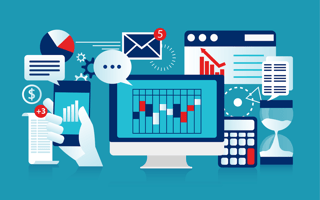
Sales has always been about building relationships, and for a long time, that meant resisting sales automation. While marketing automation became popular 10 years ago, sales reps weren’t trusted with those tools out of fear that automating outreach would make the process impersonal.
That all changed about five years ago with the advent of sales engagement software, according to David Dulany, founder of the sales development consulting firm Tenbound. While CRM platforms contained vast troves of customer information, it took a lot of manual labor to extract customer insights. Sales engagement tools like SalesLoft and Outreach, however, integrated with the CRM to let reps take advantage of the data.
Sales has gone through a tremendous change. It’s gone from horse and buggy to Ferrari in five years.”
Suddenly, reps could set customer outreach priorities, place them in automated email cadences and quickly update the CRM from the platform. That opened the door for other innovations to speed up manual sales processes, like prospecting research, marketing content distribution and even dialing out.
“Sales has gone through a tremendous change,” Dulany said. “It’s gone from horse and buggy to Ferrari in five years.”
Today, tech is integral to the sales process; the average sales development rep uses about six tools to do their job, according to a study conducted by InsideSales.com Labs in partnership with several sales technology providers. There are sales automation tools for prospecting, scheduling outreach and training. The best tools let reps spend more time building relationships and less time doing research and manual data entry, said Steven Wright, a sales enablement expert at Vendor Neutral.
To do that, it’s important to have a robust sales process in place and to find tools that integrate with each other.
We spoke with sales tech analysts Dulany and Wright, along with Upwork Sales Trainer Alex Downey, Onna Sales Enablement Lead Andrae Washington and BigTime Software Senior Sales Operations Analyst Cameron Bumstead about the sales automation tools they find most useful, and why.
11 Sales Automation Tools to Know
- Zoominfo
- LinkedIn Sales Navigator
- SalesLoft
- Groove
- Outreach
- Yesware
- HighSpot
- Slack
- Chili Piper
- Gong
- DocuSign
Sales Intelligence
While sales has become an increasingly data-driven enterprise, it’s still about building relationships. And the more a rep knows about the prospect, the better. Sales intelligence tools help salespeople create a basis for engaging with a contact, Wright said.
Often these tools will scrape LinkedIn and other websites to help salespeople find new buyers, get the latest intel on an existing buyer’s company and qualify their leads.
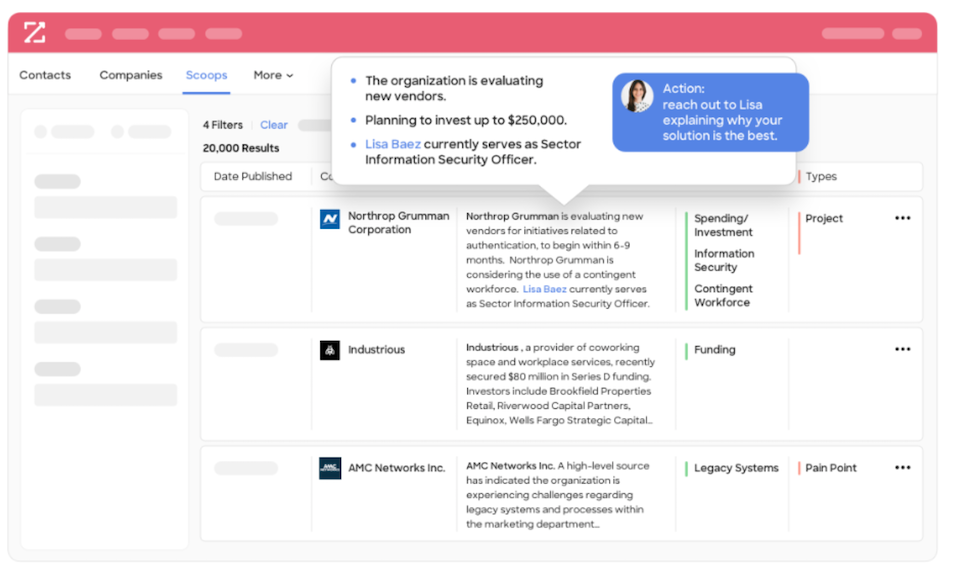
ZoomInfo
With a large contributor network and machine learning capabilities, ZoomInfo provides a vast database of B2B customer information that syncs with a company’s CRM and sales engagement platform. Through the platform, salespeople can find ideal buyers and retrieve up-to-date contact information. The tool also scans company websites, news articles and SEC filings to provide the latest customer intel.
At Upwork, Downey said her team uses ZoomInfo in conjunction with LinkedIn Sales Navigator to make sure it has the most up-to-date customer information in Salesforce. The intel makes it easier for sales reps to send personalized outreach to prospects and ensure their conversations are relevant to the buyer’s needs, Downey added.
ZoomInfo has also gained traction in the market. In June, it became the first tech company to file for an IPO in the COVID-19 era, where it saw its stock rise 60 percent in its debut.
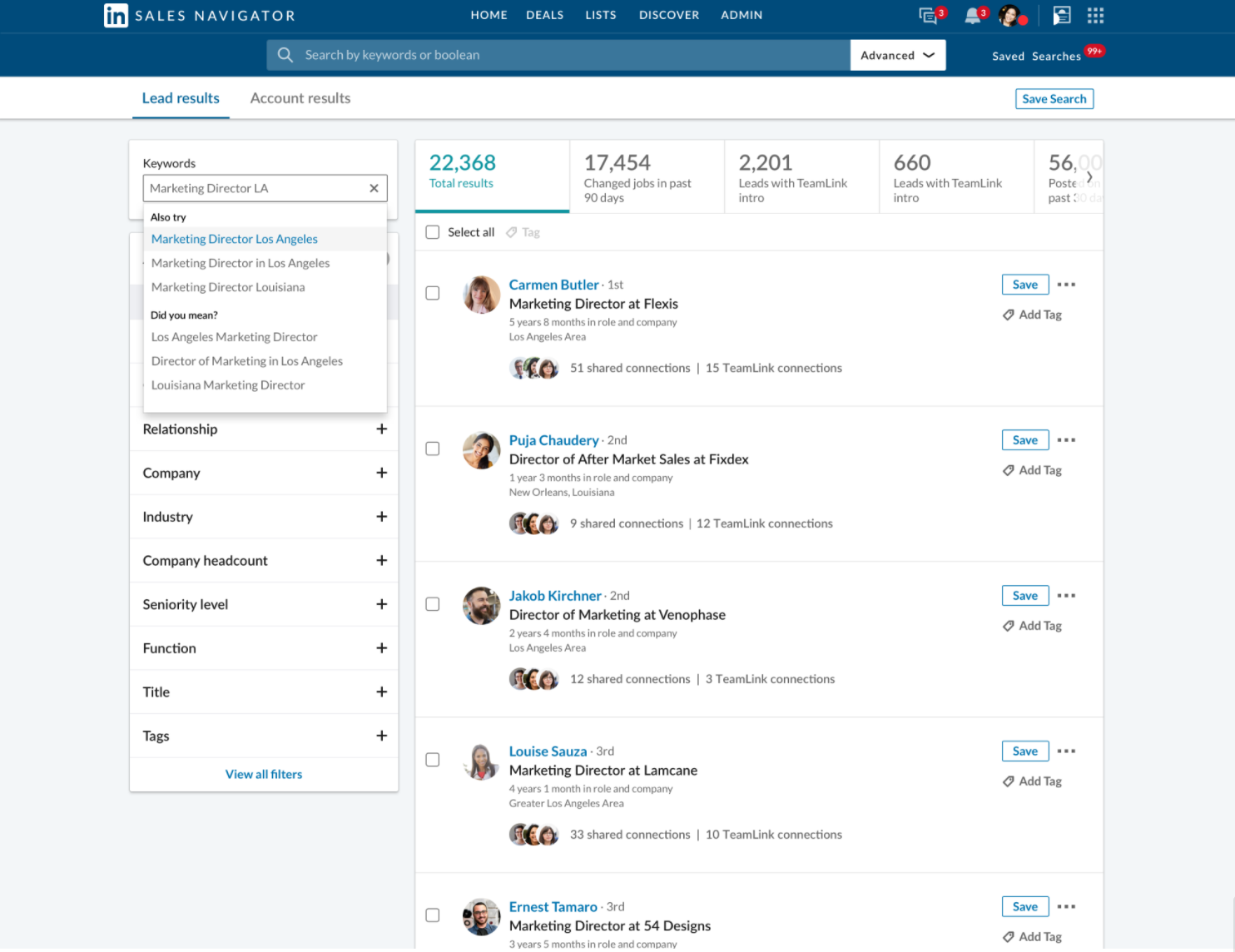
LinkedIn Sales Navigator
LinkedIn plays an integral role in the modern selling experience. It’s where a rep can build a personal brand, share content with a wide network of buyers and make connections. LinkedIn’s Sales Navigator tool amplifies that strategy for sales teams. Through the platform, reps are able to sort and tag key accounts to stay up to date with events that may indicate a buyer is interested, said Washington, whose team at Onna uses it. LinkedIn Sales Navigator also tracks valuable data on social engagement to help sales managers evaluate the success of their social sales strategies.
To Washington, the value of Sales Navigator lies in its simplicity and ability to integrate with the rest of its tech stack — particularly SalesLoft. Reps are able to search for prospect info and then send LinkedIn Inmail messages directly from SalesLoft, reducing the number of tabs reps need to keep open to be effective at their jobs.
Sales Engagement
One phone call or email isn’t enough to engage a buyer. Successful outreach requires persistently following up with a customer across multiple channels over the course of a month. This can be challenging to pull off when reps are expected to make 100 calls a week. That’s where sales engagement tools come in.
Dulany likens a company’s CRM to a big filing cabinet that stores customer information. Sales engagement platforms are designed to interact with the CRM and turn the vast data trove into an actionable to-do list for reps. This includes establishing customer priorities each day and aligning outreach strategies to a team playbook.
When selecting a sales engagement tool, it’s important to take into account the software’s complexity and how smoothly it interacts with your CRM. Some tools, like Outreach, have extensive feature sets designed for larger sales teams, while others like Yesware are streamlined for smaller teams.
In short, sales engagement tools are critical in any sales stack. Here are some of the leading sales engagement platforms you can choose from:

SalesLoft
SalesLoft is an engagement platform that connects with a company’s CRM to help sales reps manage and prioritize their workflows. Upwork uses it to help reps plan, strategize and execute outreach, Downey said. Through the platform, a salesperson can set up automated email cadences for their customers and draw marketing content from the sales enablement platform HighSpot.
The tool also collects data on email engagement, which allows sales leaders to conduct A/B tests on different email strategies, Downey said. Sales reps can also share email copy that works with each other, and easily tweak shared copy to match their own voice and style.
Onna also relies on SalesLoft as a one-stop shop for outreach automation, deal management and live-execution coaching. The platform allows its reps to edit active sales opportunities, update Salesforce and receive feedback all in the same place, Washington said.
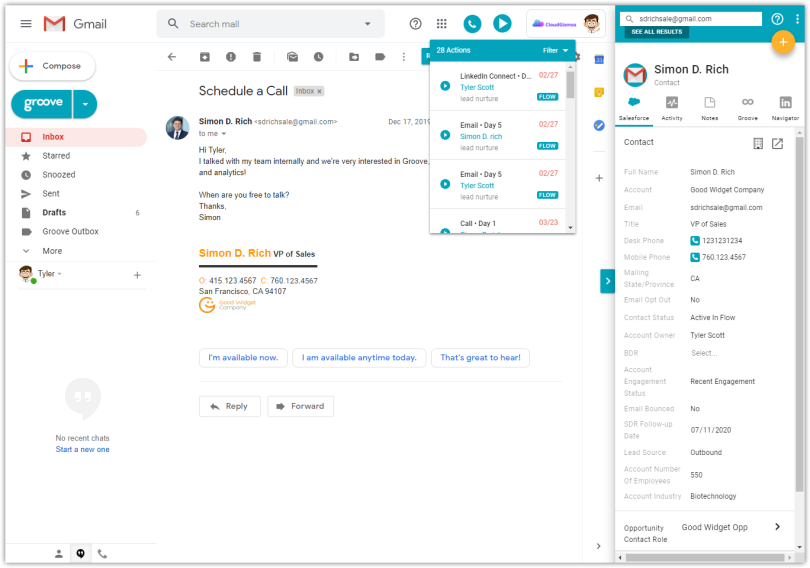
Groove
Designed to drive customer satisfaction and revenue, Groove helps sales teams collaborate, support prospects and convert them into customers. As an inbound sales shop, BigTime Software uses Groove as its primary sales automation tool, Bumstead said.
Much like other sales engagement tools, Groove lets reps drop customers into email cadences and helps them prioritize their workflows. But what Bumstead’s salespeople like most is its interoperability with Salesforce. Rather than bounce between the CRM and a sales engagement platform, Groove works inside Salesforce, allowing reps to see their workflows without leaving the CRM.
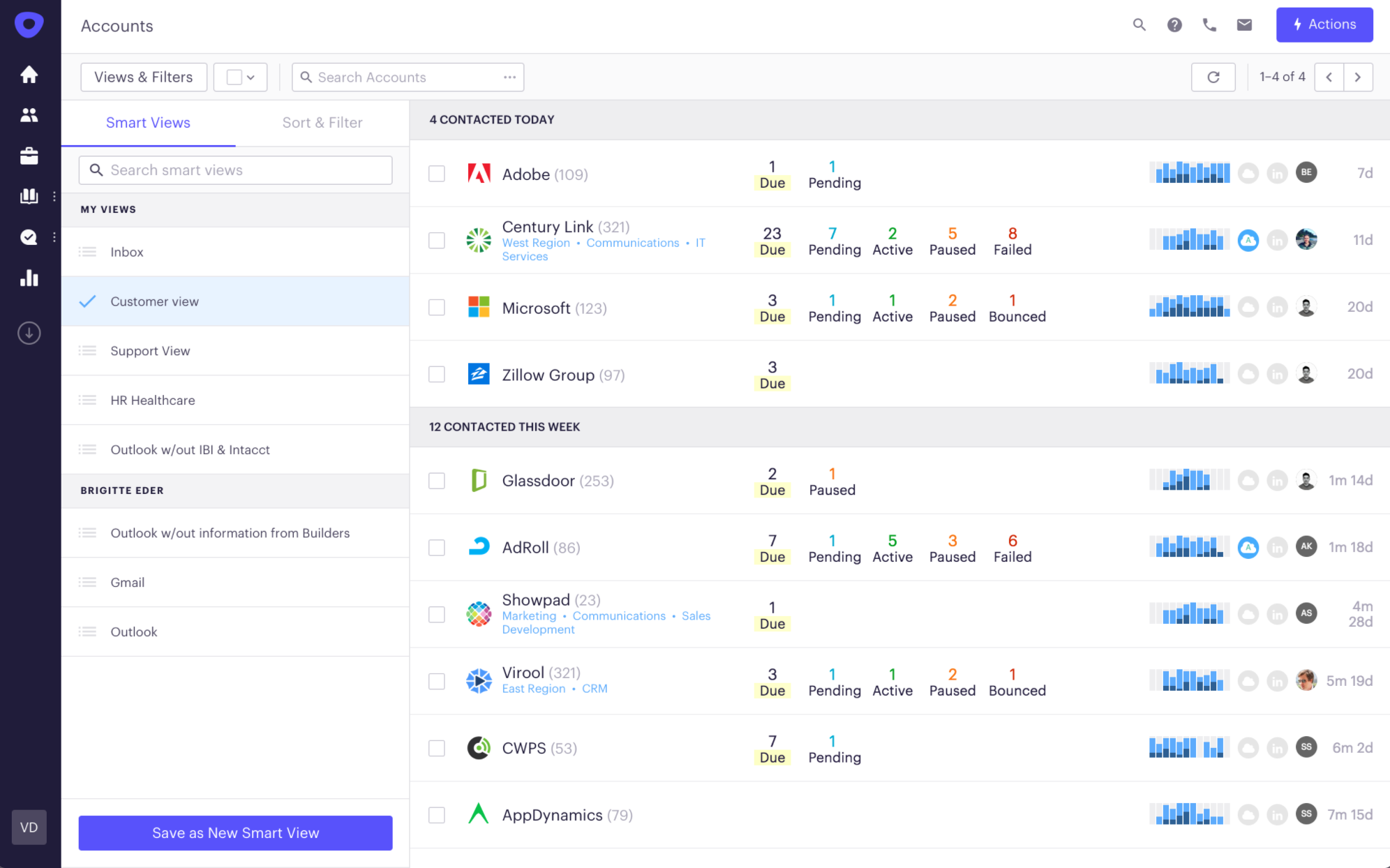
Outreach
Outreach provides a robust platform that allows reps to set cadences, track data on email engagement and collaborate with marketing teams. It’s ideal for larger sales teams that rely heavily on outbound prospecting, Bumstead said.
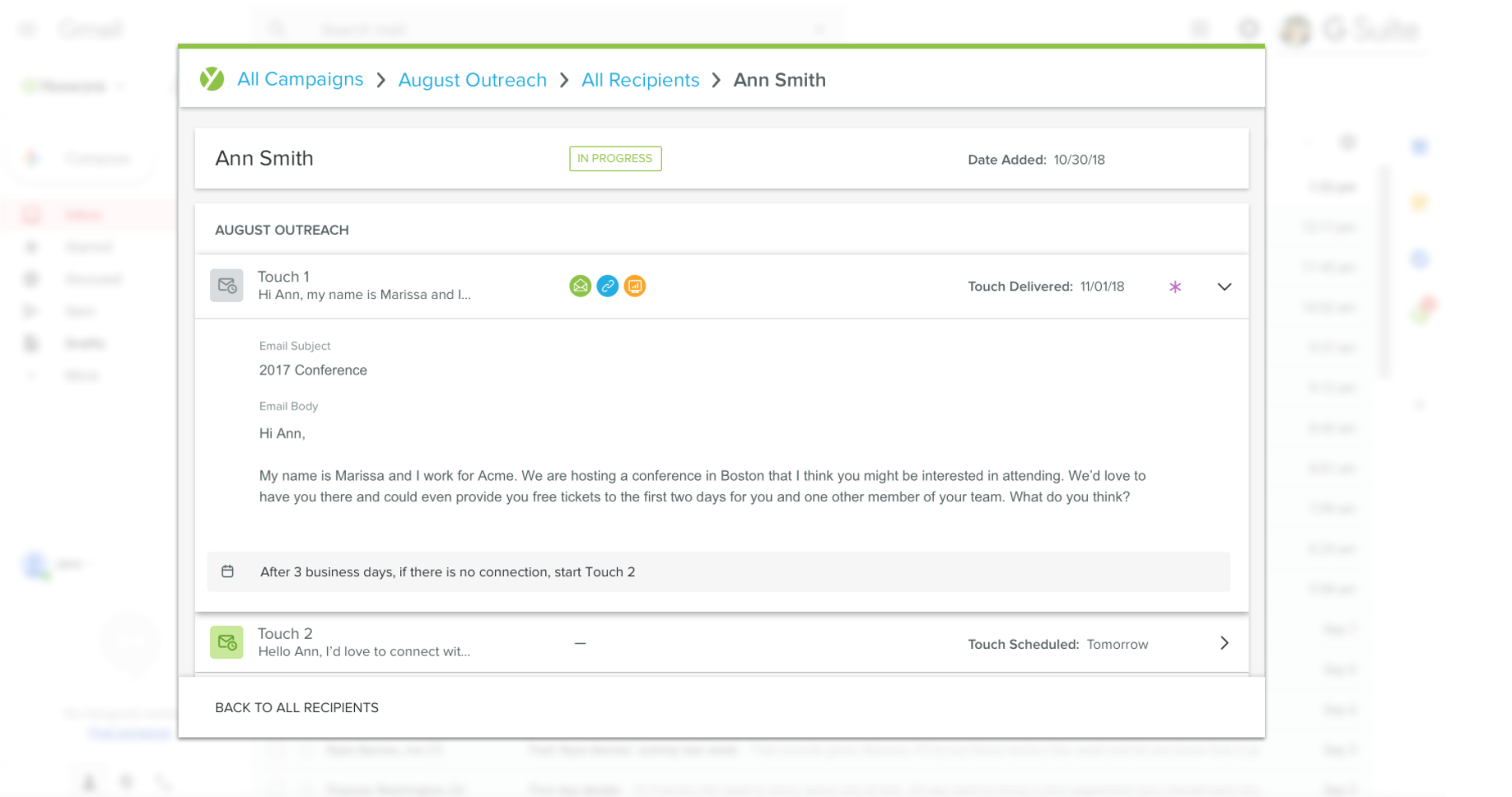
Yesware
On the opposite end of the complexity spectrum from Outreach, there’s Yesware. The app plugs into a rep’s email client and allows them to create email campaigns and track data. Like the others, it also syncs with Salesforce and other sales intelligence tools. However, it’s built explicitly for email, which makes it great for basic sales engagement needs, Bumstead said.
Sales Enablement
In an ideal world, the marketing team creates valuable content that sales reps can share with customers. In turn, reps offer guidance on what works and what doesn’t. That doesn’t always happen in reality. Without a shared platform, reps have a hard time knowing what marketing resources to use when.
Sales enablement tools bridge that gap, creating a shared place for marketing to distribute resources and for sales to leverage it. These platforms facilitate conversations and are designed to help a rep find more success through content.

HighSpot
Based in Seattle, HighSpot organizes marketing content and uses AI to help salespeople figure out what content to send customers — and when. As a sales trainer, Downey said HighSpot helps her give sellers guidance on how to use different white papers and sales strategies.
“Having a single point where everything lives is useful,” Downey said. “If you’re looking for a specific case study on how sales teams use Upwork, I can quickly find it within the tool. I’m not asking 200 people for that content.”
The tool’s analytics track customer engagement with the content. This helps both marketing and sales to understand what pieces of collateral are resonating, and which are not.

Slack
As a communication tool, Slack hardly needs an introduction. However, the platform’s customizability and ability to automate communication has made it a useful sales enablement tool for Onna. Since it’s the one tool everyone in the company uses, the sales enablement team has leveraged it to help sales reps collaborate more effectively with each other and other teams.
The team has automated facilitation of its morning stand-ups and daily debriefs, and created an integrated workflow with other sales enablement tools. In practice, that means reps are able to use slash commands to find, request and receive sales materials from the enablement team — all through Slack.
Other Tools to Know
In addition to automating lead generation and prospect outreach, sales tech can give sellers an edge in other aspects of the sales process. There are tools that leverage AI to help teams analyze phone calls, apps that make it easier for inbound customers to meet with a rep and software that simplifies the contract negotiation stage.

Chili Piper
In inbound sales, the faster a rep can speak with an interested customer, the better. Chili Piper is a scheduling app that makes it easier for prospects to set meetings with sales reps. BigTime Software uses the tool to increase its conversions on form fills.
When a customer fills out a contact form, instead of going to a “Thank You” page, the app directs them to a calendar to book a meeting. The tool has had an immediate impact on the company’s sales team, helping it to capture customers at the peak of their interest, Bumstead said. On the back end, Bumstead has customized it so that it rotates rep calendars, balancing sales opportunities.

Gong
With more companies turning to inside sales as the dominant sales strategy, understanding what goes on during a customer call has become more important than ever. Gong’s call recording software uses AI to break down every sales call and logs the recording and relevant data into your CRM. It also collects data on the types of conversations a rep has, whether they spend too much time with small talk or aren’t asking enough questions.
Those insights make it a valuable sales training tool both for current reps and new ones, Bumstead said. The best way for a rep to learn is to listen to their recordings and those of successful reps. Being able to index and send recording files through Gong facilitates that exchange.
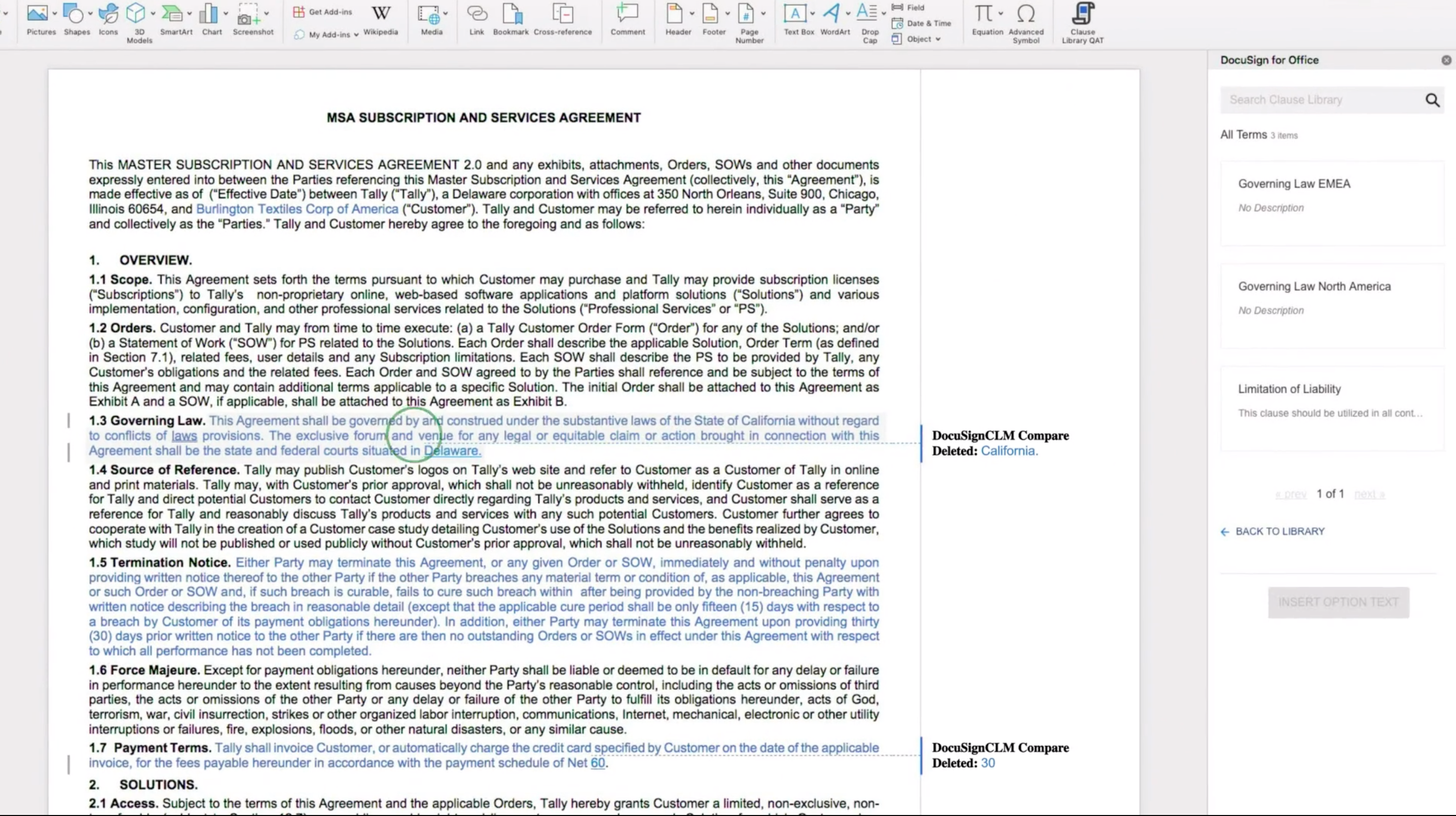
DocuSign
The contracting stage of the buying process can be notoriously sticky. It’s not uncommon for deals to drag out as lawyers or buyers tweak terms and agreements. While this doesn’t affect the salesperson per se, the more time that passes in signing a deal, the more risk there is in losing it, Downey said. DocuSign digitizes the entire process, allowing companies to send contracts, negotiate and sign on its platform.
This makes it a useful tool for Upwork.
“The reason we use it is to make it easy to manage the contract terms and agreements,” Downey said. “Once we’ve figured out a quote, it’s easier for us to get the signature we need.”
